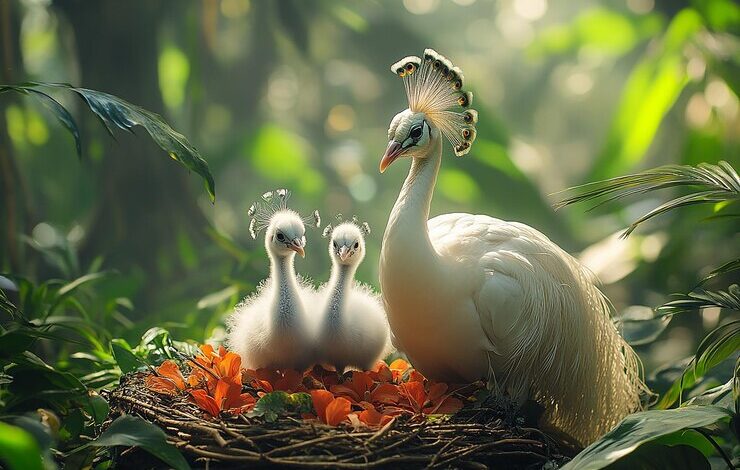cobs and cygnets nyt: Understanding the Family Life of Swans

Swans have long captivated the human imagination with their grace, beauty, and strong familial bonds. Among the various species, the mute swan, often seen gliding gracefully on lakes and rivers, is particularly renowned for its striking appearance and intriguing behaviors. This article explores the fascinating dynamics of swan family life, focusing on the roles of cobs (male swans) and cygnets (young swans), and the challenges they face in their natural habitats.
The Basics: Who Are cobs and cygnets nyt?
Before delving into the intricate family life of swans, it’s essential to understand the terminology:
- Cob: This term refers to a male swan. Cobs are typically larger and more robust than their female counterparts, known as “pens.” They possess a distinctive curved neck and are easily recognized by their commanding presence.
- Cygnet: A cygnet is a young swan, usually under one year old. These fluffy, gray or white chicks are one of nature’s most adorable sights and play a crucial role in the continuity of swan families.
Understanding these terms sets the stage for exploring the life cycle and familial dynamics of swans, particularly how cobs and cygnets interact and thrive together.
The Role of the Cob
Cobs play a significant role in the family unit, contributing to the safety, nurturing, and socialization of cygnets. Their responsibilities can be broken down into several key areas:
1. Protection and Defense
One of the primary roles of the cob is to protect the family. Swans are known for their aggressive behavior when it comes to defending their young. A cob will fiercely guard its territory, especially during the breeding season when cygnets are most vulnerable. This protective instinct is essential for the survival of the cygnets against potential threats from predators like foxes, birds of prey, and even human disturbances.
2. Leadership and Guidance
Cobs often take the lead when it comes to navigating their habitat. They are instinctively aware of safe routes and feeding areas, guiding the family to resources necessary for their survival. This leadership fosters a strong bond within the family unit, as the cygnets learn from their father’s behaviors and instincts.
3. Nurturing Behavior
Though traditionally seen as the protector, cobs also exhibit nurturing behaviors. They may engage in preening their young, which helps to strengthen their bond and provides comfort. This attention to the cygnets encourages healthy development and social interaction within the family.
The Role of Cygnets
Cygnet life is an exciting and formative time. During their first few months, cygnets experience rapid growth and development, which is vital for their future survival. Here’s how they navigate their early lives:
1. Learning and Socialization
Cygnet behavior is heavily influenced by their parents, particularly during their first few weeks of life. They learn essential survival skills, including foraging for food and recognizing danger. Observing the cob’s actions helps cygnets develop their instincts and behaviors.
2. Foraging for Food
Swans are primarily herbivorous, and cygnets learn to forage from an early age. While the parents may provide some food, cygnets gradually learn to seek out aquatic plants, algae, and small insects. This process is crucial for their development, as it helps them become independent as they grow.
3. Development of Plumage
As cygnets grow, they undergo a dramatic transformation. Initially, they are covered in soft gray down feathers, which provide insulation but are not waterproof. Over the months, they begin to develop their adult plumage, eventually transitioning to the striking white feathers typical of adult mute swans. This change not only signifies growth but also prepares them for their role as adults within the swan community.
The Family Dynamics
The family dynamics between cobs, pens, and cygnets are fascinating. Swans are known for forming monogamous pairs that mate for life, which enhances the stability of the family unit. The bond between the cob and pen is crucial for raising healthy cygnets.
1. Monogamy and Partnership
Mute swans typically mate for life, forming strong bonds that are evident in their behavior. Both parents share responsibilities in raising their young, demonstrating cooperative parenting. This partnership ensures that cygnets receive adequate care and protection, increasing their chances of survival.
2. Teaching Independence
As cygnets grow, their parents gradually encourage independence. While they continue to provide guidance and protection, there comes a time when the parents begin to withdraw, allowing the cygnets to explore and forage on their own. This transition is essential for the cygnets’ development, as it prepares them for a life of autonomy once they leave the nest.
3. Navigating Challenges Together
The swan family faces numerous challenges, from environmental threats to human interference. Together, they navigate these difficulties, reinforcing their bonds through shared experiences. Whether it’s finding safe feeding grounds or evading predators, the family unit must work together to thrive.
Challenges Facing Cobs and Cygnets
Despite their beauty and grace, swans face numerous challenges in their natural habitats. Understanding these threats is crucial for appreciating the lives of cobs and cygnets.
1. Habitat Loss
One of the most significant threats to swans is habitat loss. Wetlands, lakes, and rivers are increasingly threatened by urban development, pollution, and climate change. These changes can diminish the availability of nesting sites and feeding grounds, impacting the survival of cygnets.
2. Predation
Predation is a constant danger for young swans. Cygnet mortality rates can be high, especially in the early weeks of life. Predators such as foxes, raccoons, and even large birds can pose threats to unsuspecting cygnets. Cobs play a crucial role in safeguarding their young from these dangers.
3. Human Disturbance
Human activities can have a profound impact on swan populations. Boating, fishing, and recreational activities can disrupt nesting sites and feeding grounds. Moreover, pollution can affect water quality, impacting the health of both swans and their habitats. Awareness and education are essential in mitigating these threats.
4. Climate Change
Climate change poses a long-term threat to swan populations. Changes in water levels, temperature fluctuations, and altered ecosystems can impact food availability and breeding patterns. Cobs and pens must adapt to these changes to ensure the survival of their cygnets.

Conservation Efforts
Recognizing the importance of swan populations, various conservation efforts have been established to protect these magnificent birds. Organizations around the world are working tirelessly to safeguard their habitats and promote awareness of the challenges swans face.
1. Habitat Restoration
Many conservation groups focus on restoring wetland habitats essential for swan populations. By creating protected areas and restoring degraded ecosystems, these initiatives aim to provide safe nesting and feeding grounds for swans and other wildlife.
2. Community Engagement
Raising awareness about the importance of swan conservation is critical. Many organizations conduct educational programs in schools and communities to foster appreciation for swans and their habitats. Engaging local communities can lead to more significant support for conservation efforts.
3. Research and Monitoring
Ongoing research into swan populations helps scientists understand their behaviors, migratory patterns, and ecological needs. Monitoring swan populations provides valuable data that can inform conservation strategies and policies.
Conclusion
The relationship between cobs and cygnets nyt is a beautiful representation of family life in the natural world. Swans are not just stunning creatures; they embody strong family bonds and shared responsibilities essential for survival. As we appreciate the elegance and grace of swans, it’s crucial to recognize the challenges they face and the importance of conservation efforts.
By fostering a deeper understanding of the dynamics within swan families, we can appreciate their role in our ecosystems and advocate for their protection. As we work together to ensure the survival of swans and their habitats, we contribute to the ongoing story of these remarkable birds and the natural beauty they represent. Whether observing swans in the wild or learning about their life cycles, we are reminded of the interconnectedness of all living things and our responsibility to protect them.

